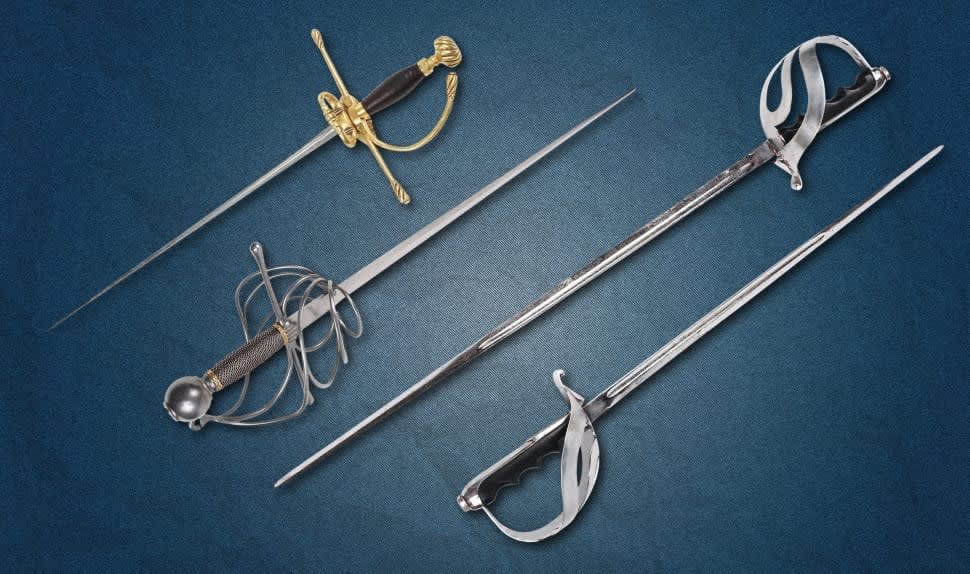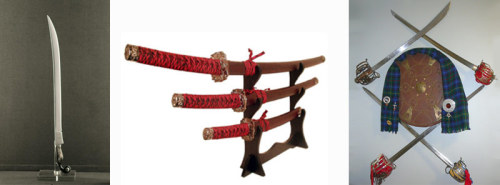A Thing of Beauty and Value

Do you remember that scene from The Bodyguard when the bodyguard (Kevin Costner) takes his employer's (Whitney Houston) silk scarf, throws it nonchalantly into the air and positions his formidable sabre under it? As the scarf gently floats downwards, answering the pull of gravity, it gets cut in half by the razor-sharp blade. And Kevin Costner's character does not even get fired.
After the movie came out, the internet forums, where sharp weapons aficionados gather, were abuzz with conjecture: is that really possible? The final verdict was... inconclusive. Some said: can be done; others: no way!
Be that as it may, the discussion sparked by The Bodyguard, which sporadically still goes on, revealed that collecting swords and other weapons with sharp edges is an engrossing hobby.
Perhaps you too are thinking of giving it a try?
We suggest you first take a long, deep look into your wallet. Collecting swords is not a cheap hobby. Battle ready swords can cost a lot; antique and other historic swords even more. Ornamental swords are cheaper, but a true collector may not be satisfied with a mere decorative wall-hanger. (They are guaranteed not to be able to cut a floating silk scarf).
Besides, it is worth saving up for a higher-grade weapon, because some swords are worth big money and can double as investment pieces.
Experts advise absolute beginners to start at the beginning and learn about swords. For example, you should be able to recite all parts of a sword: blade, forte, edge, tang, hilt (or handle), pommel... You should also know at least the most prominent types of swords: ancient, medieval, pirate, Napoleonic, Japanese, etc., as well as the stories and legends spun around them over centuries.
As soon as you save enough money to buy your first word, it is time to start thinking about caring for it.
Your arch enemy is the corrosion. All ferrous materials, including stainless steel, will rust in varying degrees if not maintained well.
To keep your swords rust-free, keep it in a low-humidity environment, avoid touching the blade with bare hands, and use steel hooks (as opposed to aluminium) when hanging them on the walls. From time to time, clean and wipe the metal parts of your sword (the blade, metal scabbards) with a lightly oiled cloth. Wooden handles may be treated with a light coating of lemon oil to help prevent cracking. If your sword has leather parts (scabbards, sheaths, handles), treat them with a paste wax. And do note that leather can trap moisture and lead to rust spots, so you may not want to store your sword in a leather scabbard for a long time.
If any of the swords from your collection need cleaning or sharpening, let the experts handle the job. If you try to do it yourself, you will probably cause permanent damage.
All edged weapons, battle ready or not, may get damaged if used improperly. Even more importantly, swords may injure or kill somebody, so do not wield them around the house and always keep them out of reach of the children.
How to Display Your Swords
A displayed sword is a thing of beauty. Whether you have just acquired your first sword or have an entire collection, proper display will maximise your enjoyment.
The options are numerous. You may hang your swords on the wall, position them on a stand, on top of a fireplace, inside a closed cabinet with glass doors... And since nothing speaks better than pictures, here are a few ideas:

